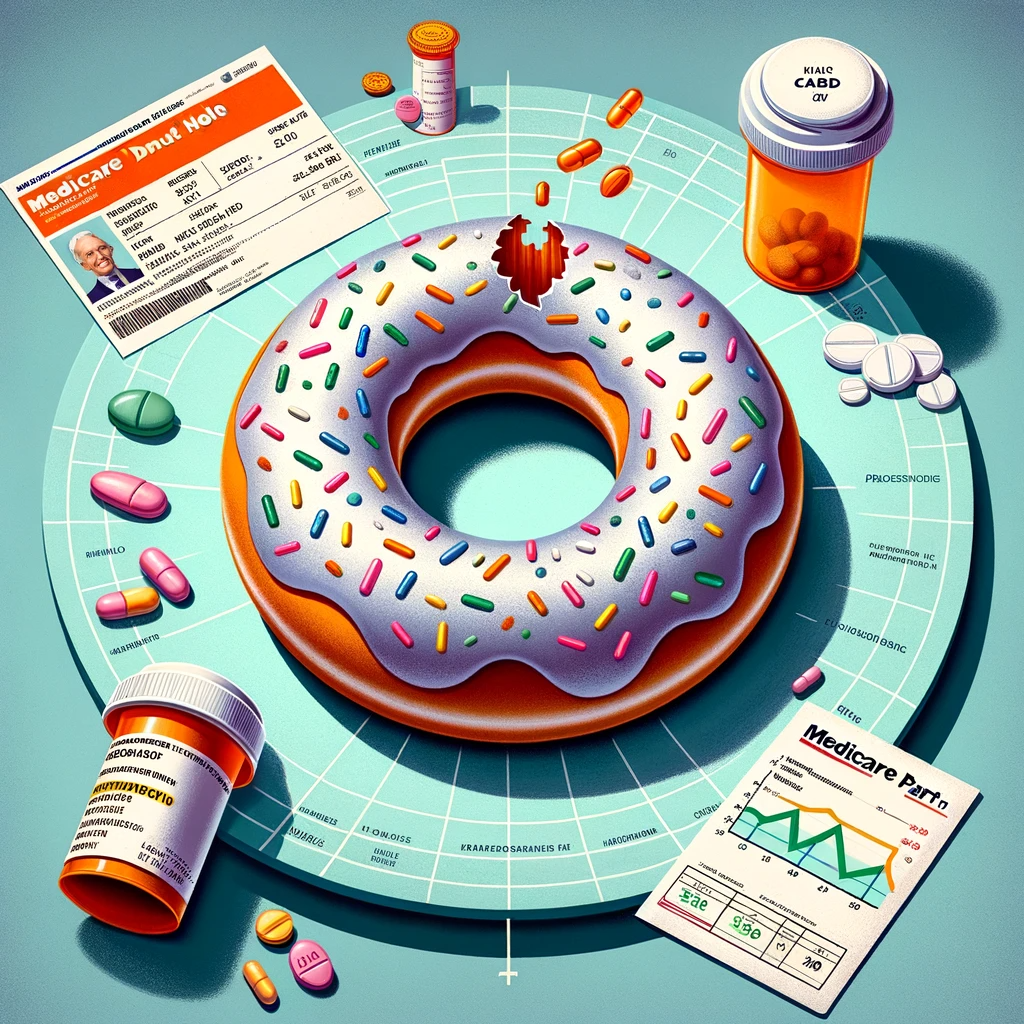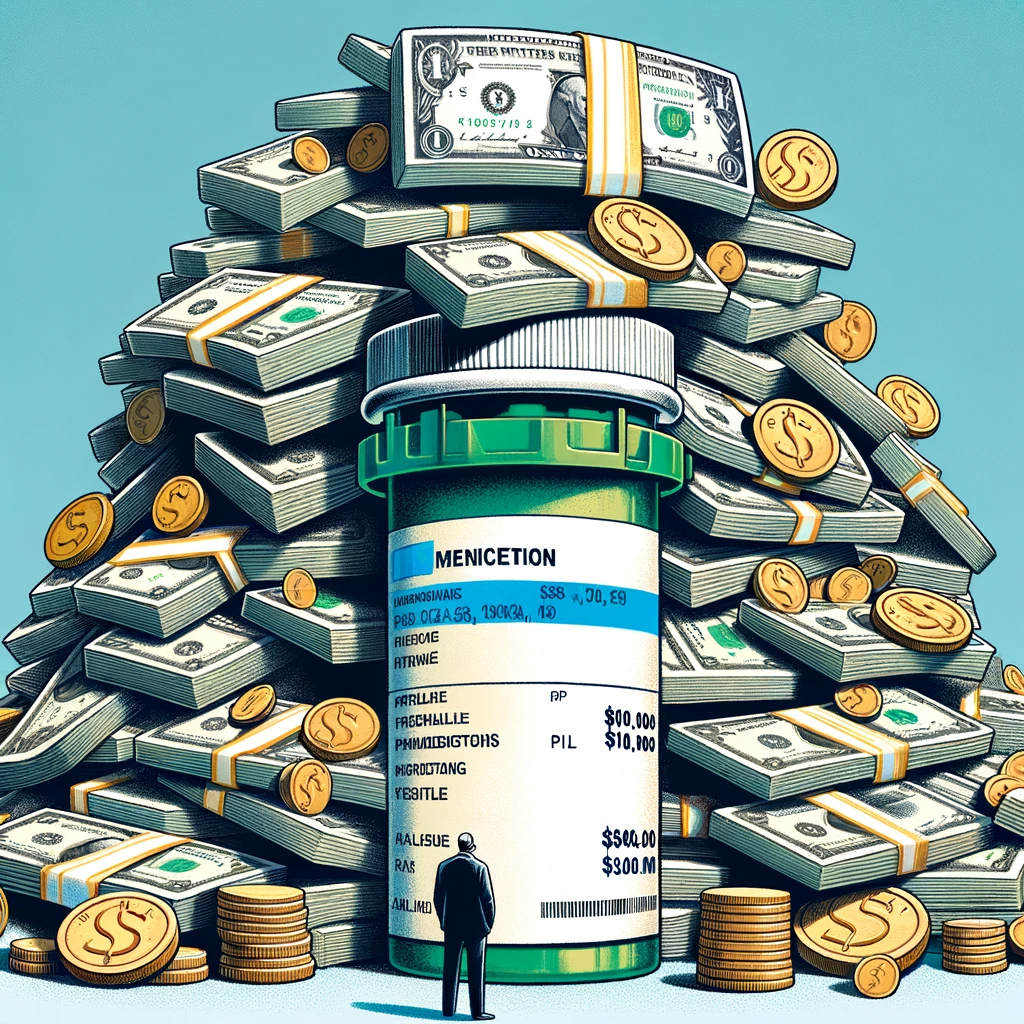Navigating the Medicare Donut Hole: Understanding and Overcoming the Coverage Gap
The Medicare Donut Hole is a coverage gap in Part D, leading to higher medication costs. MyFreePharmacyPlan.org offers a solution with flat-fee medication access, bypassing this gap and saving beneficiaries money.

Introduction
Navigating the complexities of Medicare, especially the infamous "donut hole" in Part D, can be a daunting task for many. Understanding what the donut hole is, its implications for 2023, and exploring viable solutions like MyFreePharmacyPlan.org are essential for Medicare beneficiaries to manage their prescription drug costs effectively and enjoy savings. This article delves into the intricacies of the Medicare donut hole and presents MyFreePharmacyPlan.org as a strategic solution to circumvent this coverage gap.
What is the Donut Hole in Medicare Part D?
The Medicare Part D donut hole, formally known as the coverage gap, refers to a period within a Medicare drug plan where there is a temporary limit on what the plan will cover for drugs. After spending a certain amount on covered drugs, beneficiaries enter this donut hole, leading to higher out-of-pocket costs for prescriptions until they reach the catastrophic coverage threshold.
I experienced this a year ago when I was prescribed duloxetine to help me manage my chronic pain. I was so glad to find a medication that seemed to help me manage my pain. You can imagine how shocked I was to get a call from my mail order pharmacy that I hit my donut hole. Having worked with seniors for decades, I was well aware of the dreaded donut hole.
Seniors for decades have been struggling as they hit their donut hole. Hitting the donut hole has caused pain and suffering to many seniors over the decades. This is the time of year that seniors become non compliant with their medication regime. They have been forced to choose between eating, paying bills and taking their life saving medications.
This was one of those moments for me. When I asked the pharmacist what was the cost of the medication, he replied, " That will be $700." To say I that I totally shocked was an understatement. This was a life altering decision for me. There was no way that I was going to pay $700 a month for the next 2 months. So, I made a very difficult decision. I had to stop taking the duloxetine. My years of nursing had me well aware that this decision was could cause me withdrawal. And it did. Duloxetine is an antidepressant that is used off label for chronic pain. Abruptly stopping an SSRI can lead to withdrawal symptoms, often referred to as SSRI discontinuation syndrome.
Withdrawal symptoms from SSRIs are relatively common. These symptoms can emerge when individuals suddenly cease taking their antidepressant medication. Symptoms can range from flu-like effects, sleep disturbances, and nausea, to feelings of imbalance, electric shock sensations, and restlessness. So here I was at 68 years being held hostage to a medication that I could not afford.
I will be honest, the withdrawal was brutal. At that time, I made the decision to never be held hostage to a medication or the insurance industry again.
So let me explain the dreaded donut hole.

Understanding the Medicare Donut Hole
In 2023, the Medicare donut hole comes into effect after a beneficiary and their plan spend a combined $4,430 on covered drugs. Upon reaching this threshold, the individual enters the coverage gap, where they typically pay 25% of the cost for both brand-name and generic drugs until their out-of-pocket costs reach $7,050, at which point catastrophic coverage begins, significantly lowering costs.
In 2024, the Medicare Donut Hole, or the coverage gap in Part D prescription drug plans, begins when the total retail value of covered drugs exceeds $5,030 and lasts until out-of-pocket spending reaches $8,000. During this phase, beneficiaries are responsible for paying 25% of the costs for both generic and brand-name drugs. Notably, in 2024, there will be no cost-sharing for those who enter the catastrophic coverage phase.
For 2025, significant changes are set to take place under the Inflation Reduction Act. These changes include introducing a new $2,000 out-of-pocket spending cap and the elimination of the coverage gap phase. Additionally, there will be a higher share of drug costs paid by Part D plans in the catastrophic phase, along with a new manufacturer price discount and reduced liability for Medicare in this phase. Moreover, there will be changes to plan costs and the manufacturer price discount in the initial coverage phase. The out-of-pocket drug spending for Part D enrollees will be capped at $2,000, indexed to rise each year after 2025 at the rate of growth in per capita Part D cost.
The Coverage Gap Meaning and Implications
The coverage gap, or the donut hole, signifies a period of reduced insurance coverage. For many, this results in higher out-of-pocket expenses for medications, posing financial challenges and potentially impacting medication adherence.
How Does the Donut Hole Work in Medicare?
Once in the donut hole, beneficiaries pay a percentage of the drug cost rather than a flat copayment. This change in cost-sharing continues until they spend enough to qualify for catastrophic coverage. During this phase, Medicare covers a significant portion of drug costs, easing the financial burden.
MyFreePharmacyPlan.org: A Solution to the Donut Hole Challenge
As an RN for over 50 years, I have supported and cared for the elderly. I have seen the struggles with paying for the high cost of prescriptions and the devastating consequences of stopping or decreasing life saving medications. So, when I learned of this revolutionary new pharmacy program, I wanted to shout the information from the rooftops. This is a revolutionary approach to purchasing our prescription medications.
An effective way to avoid the financial impact of the Medicare donut hole is through this new flat fee pharmacy. This innovative plan offers a flat-fee model for medication procurement, circumventing the traditional insurance-based formulary system.
Benefits of MyFreePharmacyPlan.org
- Predictable Costs: With a flat fee for medications, beneficiaries can better budget their healthcare expenses without worrying about the fluctuating costs associated with the donut hole.
- Comprehensive Medication Access: The plan provides access to a wide range of medications, including those typically affected by the donut hole, ensuring continuous and affordable access to necessary drugs.
- Eliminating Coverage Gap Worries: By offering medications at a consistent rate, MyFreePharmacyPlan.org effectively eliminates the concerns associated with the Medicare coverage gap.
- Enhanced Medication Adherence: With reduced cost barriers, individuals are more likely to adhere to their medication regimens, leading to better health outcomes.
- Simplicity and Convenience: The plan simplifies the process of obtaining medications, providing a straightforward and hassle-free alternative to traditional Medicare Part D plans.
How to Utilize MyFreePharmacyPlan.org
Enrolling in MyFreePharmacyPlan.org is a straightforward process. Beneficiaries can sign up online, select their medications, and enjoy the benefits of a flat-fee structure. The plan is designed to complement existing Medicare coverage, providing an additional layer of financial protection against the donut hole.
Conclusion
The Medicare donut hole poses a significant challenge for many beneficiaries, but with solutions like MyFreePharmacyPlan.org, it's possible to mitigate its impact. By offering predictable costs, comprehensive medication access, and eliminating worries about the coverage gap, this plan puts more money back in the pockets of Medicare beneficiaries. In an era where healthcare costs continue to rise, MyFreePharmacyPlan.org stands out as a beacon of affordability and accessibility, ensuring that seniors can maintain their health without financial strain.

Update for Medicare Advantage Medications
Cost-Sharing Structure: Medicare Advantage plans may have different cost-sharing structures, which can include varying deductibles, copayments, or coinsurance for medications. This can sometimes result in lower out-of-pocket costs for medications compared to Original Medicare, but it can also lead to higher costs, depending on the plan's structure and the specific medications an enrollee needs.
Network Restrictions: Medicare Advantage plans often have network restrictions, meaning that enrollees may need to use specific pharmacies to get the best pricing for their medications. Going outside the network can result in higher costs.
Annual Out-of-Pocket Maximums: Unlike Original Medicare, Medicare Advantage plans have an out-of-pocket maximum, which can limit the total amount an enrollee pays for covered services, including medications, in a year. Once this limit is reached, the plan covers all costs for the rest of the year, which can be financially beneficial for enrollees with high medication costs.
For Medicare Advantage plans in 2024, the Maximum Out-Of-Pocket (MOOP) limits are set to change, reaching up to $8,850. This change means that 4.4 million members could see an increase in their MOOP from $50 to as much as $5,400. The MOOP limit caps the amount that beneficiaries will spend on healthcare copayments and coinsurance for eligible Medicare Part A (in-patient or hospitalization) and Medicare Part B (out-patient or doctor visit) services. A higher MOOP limit indicates more out-of-pocket expenses for beneficiaries for covered services before reaching the annual maximum cost threshold. However, Part A and Part B expenses will not exceed $8,850 for in-network Medicare cost-sharing, but this does not include Part D prescription drug expenses.
For the plan years beginning in 2025, the maximum out-of-pocket limit for Medicare Advantage plans is set at $9,200 for self-only coverage and $18,400 for family coverage. This limit represents a 2.6% decrease from the 2024 limits of $9,450 for self-only and $18,900 for family coverage. Once beneficiaries reach this out-of-pocket maximum for the year, they will not be responsible for additional cost-sharing for Essential Health Benefits (EHBs) for the remainder of the year.
Become a member for the First Flat Fee Pharmacy in US
If you want to become a representative and make money from home click here
Please note that some of the links on our site are affiliate links. This means that if you click on the link and make a purchase, we may receive a commission at no extra cost to you. We recommend these products because of their quality and not because of the commission we receive from your purchases. The decision is yours, and whether or not you decide to buy something is completely up to you.
